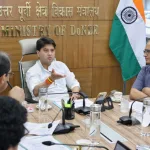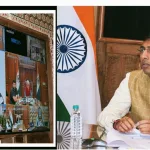PART-III
PROF (DR) SYED AMIN TABISH
Why preventive is the new curative
The need of the hour is to understand and adopt the right ‘prevention-first’ behavior. For instance, we tend to think about our health only when we have a symptom. That needs to change. The maintenance of our bodies should not be a result of a ‘scare’ or because someone we know is suffering. Our everyday habits need to be designed to put us on a healing path, to live long and truly prosper.
During the past three decades, Non Communicable Diseases (Lifestyle Diseases) have become the leading cause of death and suffering, contributing 71% of global deaths. India is not far behind, with Lifestyle Diseases having contributed to 66% of all deaths in 2019 (up from 25% in 1990). Heart diseases, cancer, chronic respiratory diseases and diabetes account for more than half of these deaths.
India’s economic growth is closely tied to the health of its people. The economic burden on India due to Lifestyle Diseases is expected be about Rs 511 lakh crore ($6.2 trillion) by 2030. Overweight conditions and obesity alone plague nearly 17% of our population, annually costing the country Rs 2.8 lakh crore ($35 billion), over 1% of its GDP. If steps are not taken to curb the spread of just this condition, India will suffer a loss of nearly Rs 69 lakh crore ($850 billion), 2.5% of its GDP, in 2060. With over half of its population under 25, India’s demographic dividend is set to propel it to a leadership position. Lifestyle Diseases can pose a hurdle through reduced productivity and higher healthcare costs. WHO predicts 1 in 4 Indians has a risk of dying from Lifestyle Diseases before reaching 70. We need a proactive and highly defined strategy to minimize the impact of Lifestyle Diseases. The best solution lies in prevention.
There is a silver lining. Mortality from Lifestyle Diseases is preventable through various interventions like adult vaccinations, regular health analysis, healthy lifestyle choices and early screening for diseases. From reducing the incidence of diseases, lowering the burden on the healthcare system and improving the quality of life, to being more economically prudent in the long run, the benefits of preventive healthcare are manifold.
From what we eat, how much we drink, how well we sleep, to how often we go for checkups, our behaviours are what define our individual health journey and, ultimately, the prosperity of India. Investing in preventive healthcare measures will significantly minimize our expense in fighting diseases in the long run. There is a need to invest and create health assessment programmes that are personalized and predictive. Programmes should be fundamentally designed to minimize the time an individual would spend in a hospital in their lifespan.
India has also put into action several public health efforts to tackle this epidemic. The National Programme for Prevention and Control of Cancer, Diabetes, Cardiovascular Disease and Stroke (NPCDCS) is helping increase awareness, setting up infrastructure (like community health centres, NCD clinics, cardiac care units), and already carrying out opportunistic screening at primary health levels. There are also initiatives in place to reduce household use of solid fuel as well as tobacco use by 2025. While they will contribute significantly to our fight against NCDs, preventive care solutions need a stronger spotlight for us to build a truly resilient and formidable India – a national movement on prevention that inculcates healthier habits, creates a safer environment and better medical decision-making. Investment in preventive healthcare minimizes individual suffering, improves outcomes of illness and drastically reduces the economic burden on the country.
World Health Day – April 7, 2023
This year 2023, World Health Day theme is “Health For All”, which encompasses the equal access for a good quality health services across all regions with limited or no financial risk. All of the major world religions stress the importance of maintaining a healthy body and mind, which is also central to the tenets of many schools of traditional medicine and their respective practitioners. Health, as defined by WHO, is a state of complete mental, emotional, and social well-being and not only the absence of sickness or disability.
WHO and Universal Health Access
- Health For All envisions a society in which all people have good health and may live happy lives in a peaceful, wealthy, and sustainable environment.
- The right to health is a fundamental human right. Everyone must have access to health care when and when they need it, without financial burden.
- Thirty percent of the world’s population lacks access to basic health treatments
- Almost two hundred crore people are facing catastrophic or impoverishing health-care costs, with considerable disparities impacting those in the most disadvantaged circumstances
- Universal health coverage (UHC) provides financial security and access to high-quality necessary services, lifts people out of poverty, promotes family and community well-being, safeguards against public health emergencies.
- To make health for all a reality, we need: individuals and communities with access to high-quality health services, so they can care for their own and their families’ health; skilled health workers who provide quality, people-centric care; and policymakers who are committed to investing in universal health coverage
(The author is FRCP (London), FACP, FAMS, FRCP (Edin), MD HA (AIIMS), FRIPH (England), FIMSA, MHSM (London), Fellow New York Academy of Sciences, Postdoctoral Fellowship; Faculty of Medicine University of Bristol (England), Doctor of Education in Educational Leadership (USA). Email: [email protected])
(To be continued…)





